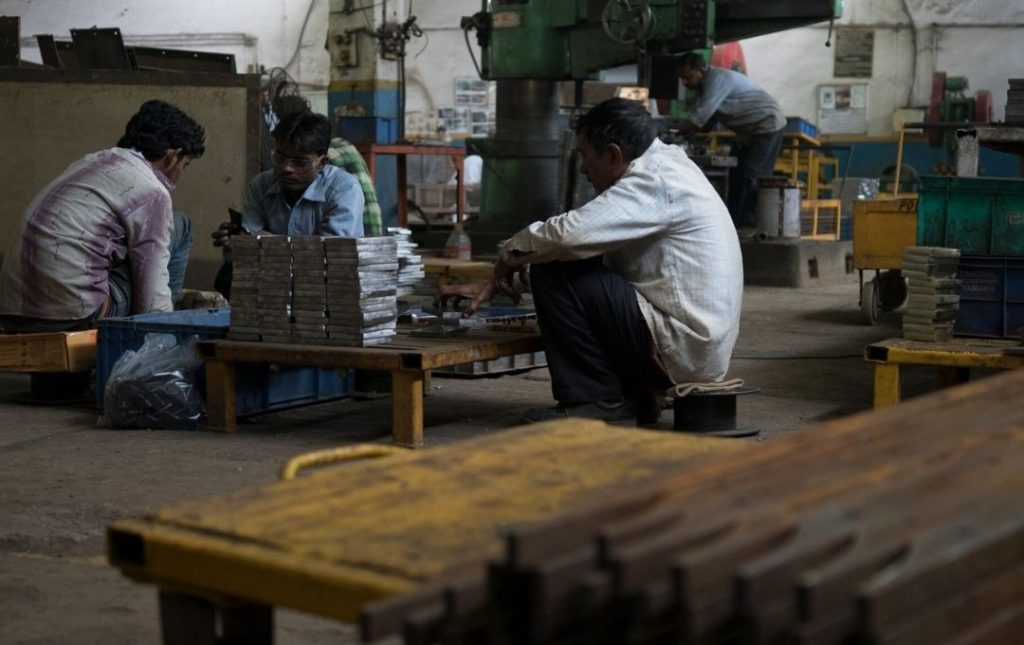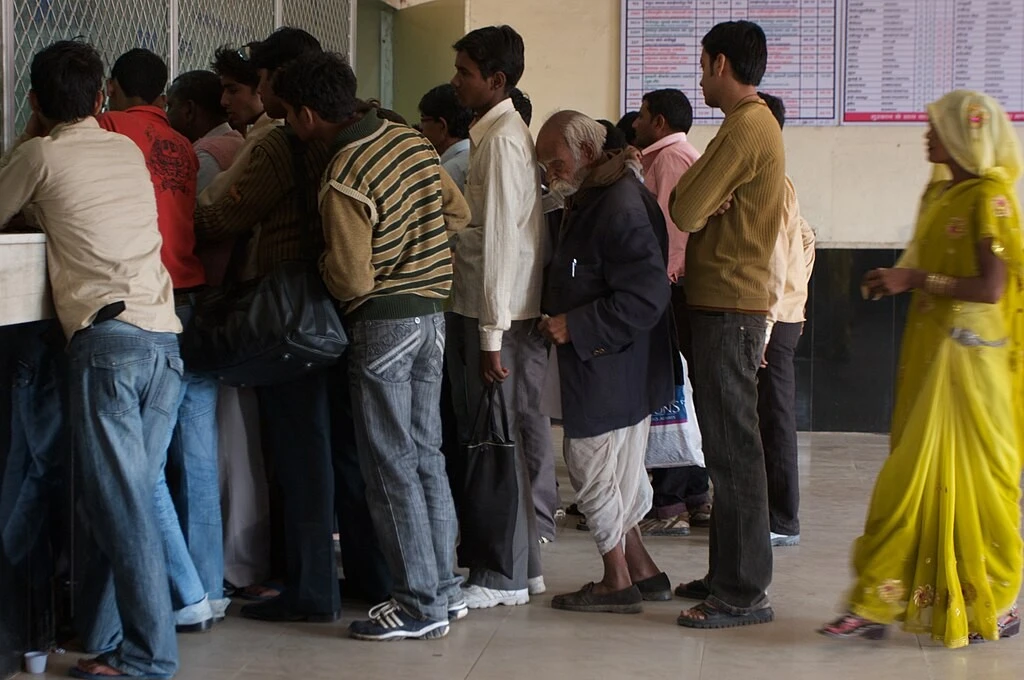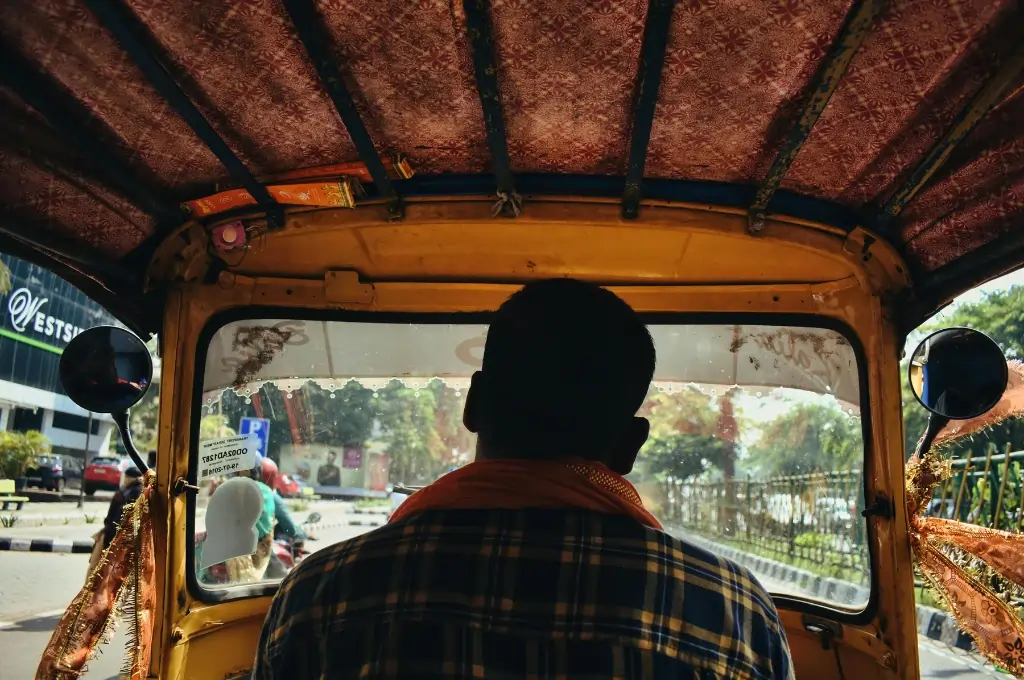As the Indian economy officially heads into a recession and news of layoffs and unemployment reaches us with increasing frequency, we at Gram Vaani turned to workers to hear their side of the story. Industrial sector workers, largely engaged in the automotive and garments factories in the Gurgaon-Manesar belt, spoke to us about the turn that their lives have taken due to the COVID-19 crisis.
Most of them—being migrant workers from Bihar and Uttar Pradesh—were forced to return to their homes during the lockdown under distressing circumstances. Having remained out of work for several months, they ultimately had no choice but to come back. The media reported companies sending chartered buses and paying for flight tickets to bring their workers back when the lockdown was eased. It briefly seemed that workers would finally be in a valued position, now that companies were honouring their worth.
However, increasingly, workers have reported that the opposite is happening, with exploitation and inequality getting institutionalised.

Post-lockdown working conditions look bleak
Of the 372 migrant workers we surveyed during October-November 2020, through our voice-based community media platform Saajha Manch, 60 percent reported that they were out of work. Of the remaining, 65 percent reported that they were getting only erratic work, for hardly three to four days in a week. Companies have no new orders, our volunteers told us, and are shutting down one branch after the next.
Up until August 2020, it seemed that companies needed workers desperately to complete their pending orders. Not enough work is available now, and companies ask the workers to go on leave for a few days, then give another day of work. Anil, a worker who returned to Gurgaon from his village around this time says he has been walking from company to company, looking for work. “Just another few days,” he says, “If I don’t find anything then I will go back.”
Workers reported that they worked longer hours, but were only paid for their regular eight hours.
Due to this work crunch in both the automotive and the garments sectors, there is pressure on workers to do as the company says, else forsake their jobs. More than 50 percent workers reported that their workload has increased tremendously. Working hours have increased as well, but most workers in the automotive sector are only paid for overtime at the regular wage rate. Conditions in the garments sector are worse, where 37 percent of workers reported that they worked longer hours, but were only paid for their regular eight hours. “If you don’t like it then you can leave, is what the employers tell us,” they reported.
Employers are said to also use other means to hold workers back, such as withholding their pending wages, or threatening to block their Provident Fund (PF) withdrawals. Whether this is happening because companies are struggling to meet their bottom lines, or because they are using this opportunity to increase their margins, it is the workers who are suffering.
There has also been a strong shift to piece-rate work and of outsourcing to local fabricators. A seasoned worker, Harsh explained that companies prefer to outsource now (without bothering to do quality checks), as it helps them save on overheads, forsake giving Diwali bonuses to workers, and meet social security compliances. Fabricators engage workers on a piece-rate basis and pay in cash. Workers prefer this these days, so that they can get immediate cash in hand and do not have to contribute part of their wages to mandatory social security systems such as the PF. Piece-rates have also reduced. Earlier, workers were paid INR 10 per piece but now they are only paid INR 8. A worker from Bihar, currently in Ahmedabad, explained that they are not able to protest because they have no bargaining power—once they arrive in the cities they have to agree to whatever work they get because they have rent to pay.


Social security is elusive
Without enough income opportunities available back home either, many workers have wanted to withdraw funds from their PF. The government announced during the lockdown that workers could withdraw up to 75 percent of their PF, or three months of wages, whichever is lower, from their accounts.
By the end of August, a massive amount of INR 39,400 crores had been withdrawn, with 79 percent of the PF contributors having incomes below INR 15,000 per month. However, we found that this is really an underestimate. Of the workers we surveyed who were out of work, 53 percent wanted to withdraw their PF but failed, and another 30 percent either did not have PF or were not aware that they had an account. Even among those who had managed to find some kind of work, 35 percent were unable to withdraw funds. The reasons in almost every case were to do with broken systems and procedures.
Mehtab told our community manager, Varun, that he had not been able to withdraw anything because the spelling of his name on the PF account did not match his name on his Aadhaar card. With Akbar, there was a mismatch in his date of joining. Workers also told us that at times, the HR in many companies are also complicit, deliberately making mistakes and then charging a commission to fix them. Staff at the PF office are not cooperative either, people said. They are made to visit again and again while foregoing their wages, or are asked to fill forms online even though many workers are not tech savvy or literate enough. Consequently, PF shops run by agents have proliferated to help workers navigate the system, but complaints of fraud are also regularly heard about them. Currently, PF has an unclaimed balance of INR 42,000 crores and an social audit is needed to explain this, given the difficulties that workers face in being able to claim their PF.
Seventy percent of workers prefer receiving cash instead of contributing part of their salary to PF.
Saddled with these issues in not being able to access money which is theirs, most workers naturally perceive PF to be a burden, as reported in a 2016 study by Nagaparaju and Sharma from IIM Indore. Seventy percent of workers prefer receiving cash instead of contributing part of their salary to PF, it found. They do not foresee themselves utilising these funds in their old-age, especially in the current circumstances. Many prefer to work on piece-rate where they can decline having to make PF contributions. This is not ideal, as acknowledged by Shanti, working in Tiruppur, since regular salaried employment, where wages come directly to their bank accounts, helps them build a good credit score to avail loans.
According to labour rights expert Professor KR Shyam Sundar, other than issues with providing reliable social security, India has not been strong on giving unemployment benefits to workers either. This continued with the announcement of an unemployment allowance for Employees’ State Insurance (ESI) holders. Like PF, ESI is a mandatory social security scheme that both employers and employees contribute to—primarily for health insurance benefits.
The allowance announced as part of the scheme is however riddled with unrealistic conditions that makes it almost non-applicable: The workers should have been in insurable employment since at least two years, and should have contributed for 78 days in the period preceding unemployment. The first condition immediately brings down the eligible poor.
The second condition of 78 days is meant to restrict the eligibility to workers who had been working since at least three months before they lost their jobs, but companies are known to avoid regularisation of workers as a workaround to the law by laying them off at a steady frequency.
No chances of redress
With so much stacked against them, are any redressal avenues available to workers? Justice delivery for labour has only worsened over the years, with a growing number of pending cases. Additionally, many workers told us that they do not consider the laws to be of any use to them, neither the old ones, nor the new labour code that was recently passed. A worker from Uttar Pradesh, Rajesh, says, “Laws were around even earlier but didn’t work, we had to walk back home and we will have to walk back again.” Another worker Prashant adds, “It is difficult for us to put documents together and take leave to go to the labour court, we can’t use the laws.”
Even if workers do go to the labour court, Manish reports that due to under-staffing at the office, workers have to stand in long lines with severe overcrowding to get their work done. To bring law closer to the workers, better functioning workplace committees, worker participation in management, and helplines and violation reporting through simple technological systems like Interactive Voice Response (IVR) is needed. This is so that irrespective of whether anybody has a smartphone or internet access, they are able to get guidance on how to proceed without having to forego their wages in their search for justice.
So, is there any hope for labourers?
Instead of trying to secure rights for workers, states such as Gujarat, Uttar Pradesh, and Madhya Pradesh tried to suspend labour laws to spur recovery during the slowdown. Thankfully, more sense prevailed at the Supreme Court. But the new labour code, passed without any due deliberation, continues to be employer-sided and makes it harder for workers to seek redress and protest against injustice and exploitation.
The reason behind these changes in the labour code is not hard to understand. A neoliberal state strives to maintain a balance between keeping wages, working conditions, and social security at a bare minimum to avoid protest, but never high enough that it can give a strong bargaining power to workers and reduce the competitiveness for Indian companies in today’s globalised markets.
Workers had no option but to come back to work under even more exploitative conditions.
This has been apparent throughout the lockdown, where few benefits really reached workers. Social welfare such as the Public Distribution System (PDS) and cash transfers under schemes like PM-KISAN and Jan Dhan fell short as well. Fallback options, such as MGNREGA, that have the potential to retain migrant workers at their home locations and thereby strengthen the collective power of workers in the labour market, have been plagued with operational issues. Serving as a basic floor wage, MGNREGA is known to have pushed higher wages for agricultural work in rural areas. Similarly, PDS is known to have led to a lowering of labour supply and consequently higher wages. In the current pandemic, a better functioning MGNREGA that paid higher wages could have led to a similar effect of securing higher wages in the cities by reducing the labour supply of migrant workers, but this has not come to pass. As a result, the workers had no option but to come back to work under even more exploitative conditions.
Consequently, the already frayed bonds between employers and workers are getting even weaker. The recent violence by workers at Wistron’s iPhone factory to protest against labour violations don’t come as a surprise. Workers are increasingly beginning to view their employers and contractors with suspicion, warning one another to take everything in writing, to first get their pending wages before agreeing to anything else, and share malpractice information with each other. The need for workers to unite has been recognised by the workers too, with emerging solidarity between contract and permanent workers. But with the new laws being created to weaken the power of unions and collective action, it seems likely that we will see more spontaneous action by the workers to make themselves heard.
The survey report behind this article also lists a set of recommendations to secure better working conditions in the industrial sector.
Acknowledgement: Thanks to the Gram Vaani team and our community volunteers across India.
Know more
- Read Seventeen Contradictions and the End of Capitalism by David Harvey, to understand how capital and its search for returns continues to exploit workers.
- Read Harsh Mander and Amitanshu Verma’s article on how the lockdown has harmed India’s informal labour force.
Do more
- Write to contact@gramvaani.org if you are interested in collaborating on or building: 1) A violation reporting system for workers 2) A grievance reporting system for social protection schemes.




